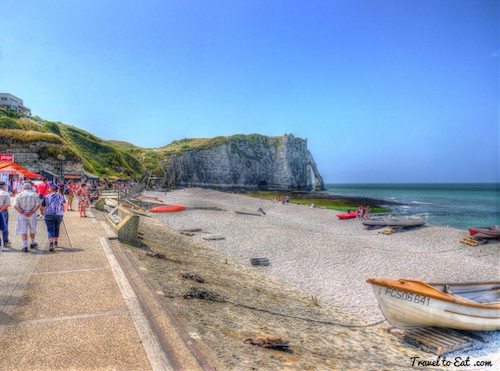
It has been hot in Paris so we decided to visit the Normandy coast. Étretat is best known for its cliffs, including three natural arches and the pointed “needle”. Although the 80-mile stretch of sheer cliffs between Dieppe and Etretat, in upper Normandy, is mirrored by those of the English coast of Dover, pointing to their shared geological origin, no other section of the French shoreline resembles the unique breathtaking seascape of La Côte d'Albâtre, the Alabaster Coast. These cliffs and the associated resort beach attracted artists including Eugène Boudin, Gustave Courbet and Claude Monet, and were featured prominently in the 1909 Arsène Lupin novel “The Hollow Needle” by Maurice Leblanc. It is a charming seaside village with beautiful sea vistas, hiking trails and a beach, rocks in the French tradition. The rocks on the beach actually come from the white cliffs which are composed of flint. The beach stones (called rollers) have become rounded and smooth from centuries of ocean action and protect the town, it is prohibited to remove them. Two of the three famous arches are seen from the town, the Porte d'Aval, and the Porte d'Amont. The Manneporte is the third and the biggest one, and cannot be seen from the town.
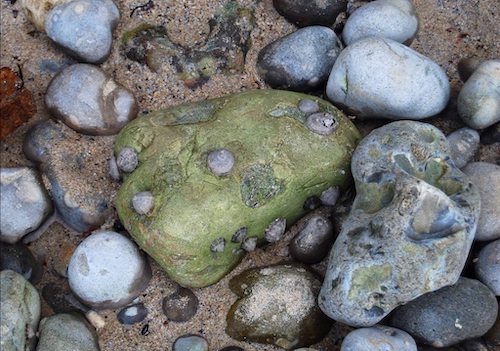
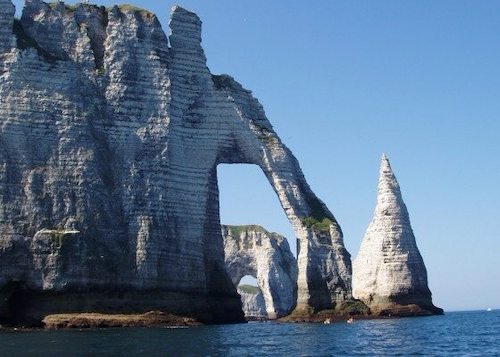
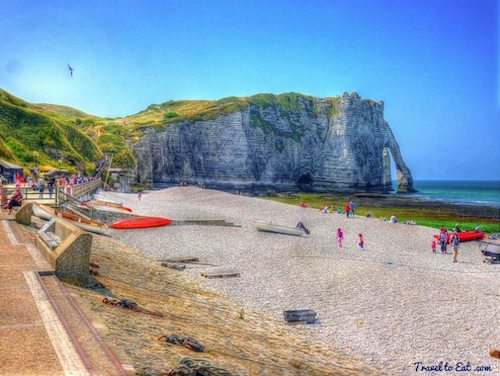
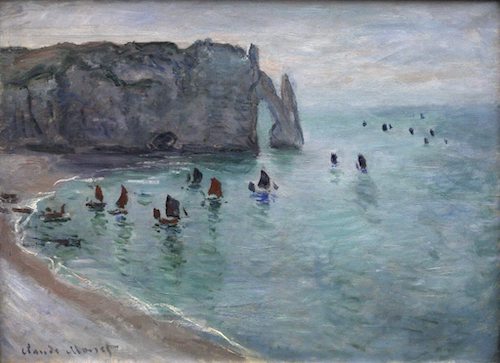
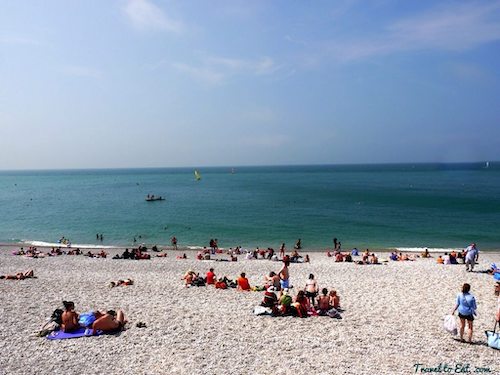
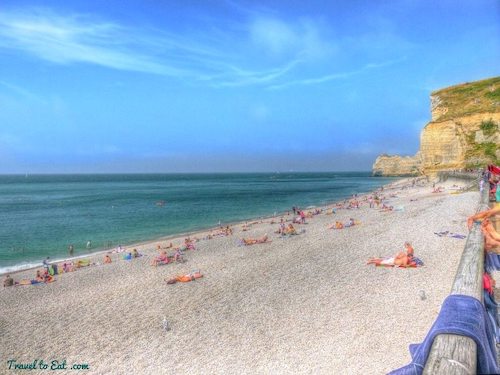

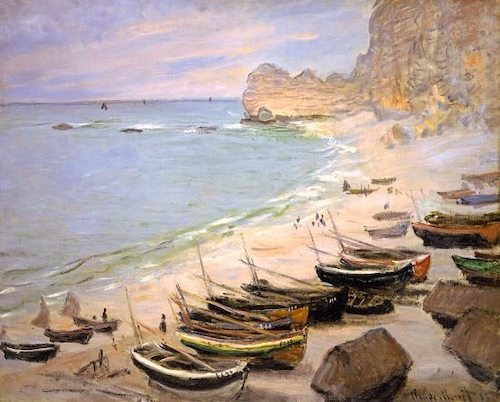
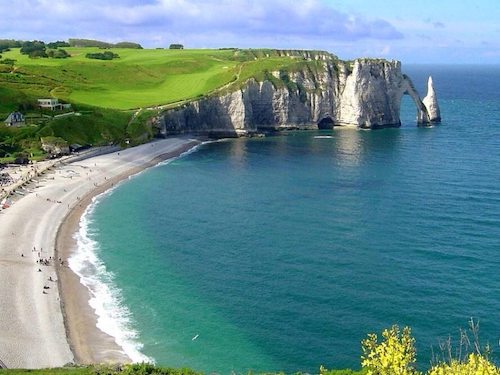
It was pretty busy for the middle of the week, lots of sunbathers and swimmers trying to evade the heat. Unsurprisingly, the coast attracted a plethora of famous painters and writers in the 19th century, especially the Impressionists, who were captivated by its ever-changing light. Although alabaster refers to the chalky whiteness of the cliffs, closer examination of them reveals a more diversified palette of black and ochre flint and of salty rust, not to mention the bruises of erosion brought about by the relentless assaults of sea, rain and gale-force winds. Even the rocks on the beach are a beautiful rainbow of colors. Monet came frequently between 1883 and 1886 to study the beautiful light and to paint. He created many paintings here at different times of the day. Courbet also came here to paint. Above the cliffs, the plateau of the Pays de Caux (from chaux, chalk) forms a natural promontory, providing endless bird's-eye views of the coast. Inland, it extends towards Rouen, its open farm fields sheltered from the winds by strategically planted rows of beech trees.
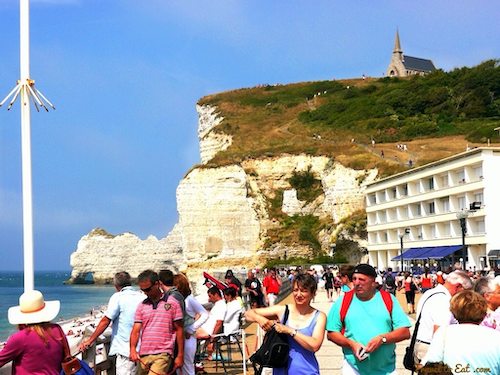
The chapel of Notre Dame de la Garde, a small, old, unadorned stone church was built by Étretat residents in homage to sailors. The nave was built around the 11th century and the central tower and choir about the I3th century; the chapel being quite representative for the Norman architecture of those periods.

It seems like every park and beach in France has carousels and Étratat is no exception. This one is a little newer design right on the boardwalk. The older carousels used to have a brass ring on the edge and the children would use sticks to try to capture it and get a free ride. This one had no brass ring, pity, an old custom lost to progress.
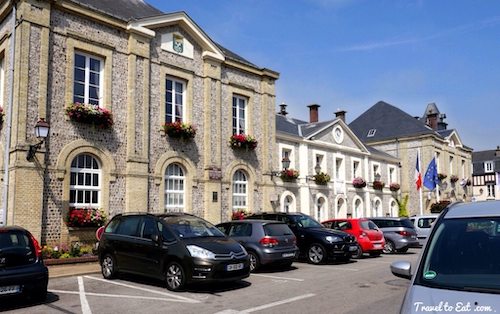
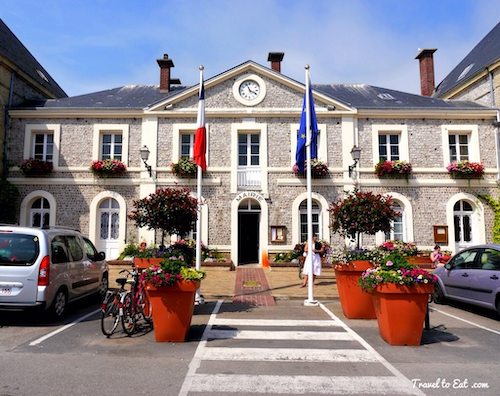
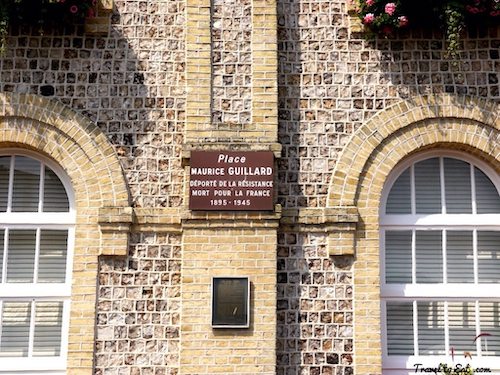
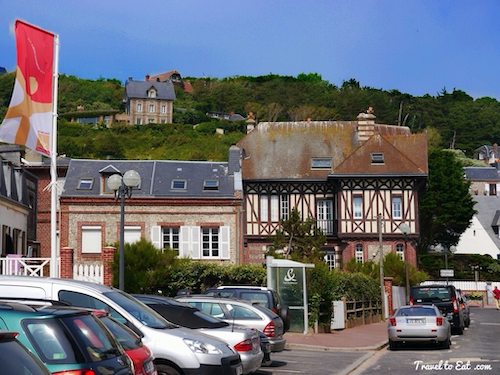
The town hall is shown on top. They have an interesting architecture here, they mix worked flint with brick. The Romans first used flint for building, mainly as the core of composite walls. Saxon and Norman churches also made use of coarse but unworked flint and this continued in the flint regions throughout the Middle Ages. A more sophisticated use of flint started at the beginning of the 14th Century in a process known as “flushwork”. This is when knapping and squaring of flints produced flat surfaces which could be framed in limestone. Flushwork became highly fashionable in the late 15th century and it continued to be popular for about 100 years. During the 17th and 18th centuries, flint was generally replaced with brick. You can see buildings made of flint all over Normandy and the UK. The flint flushwork buildings co-exist peacefully with the typical Norman half-timbered buildings.
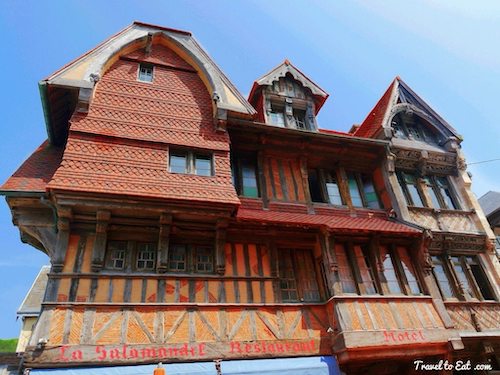
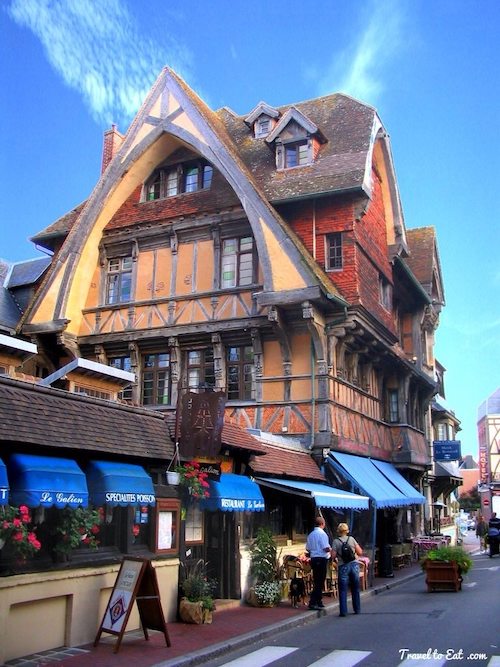
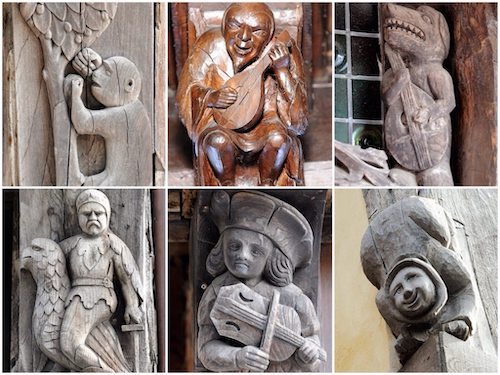
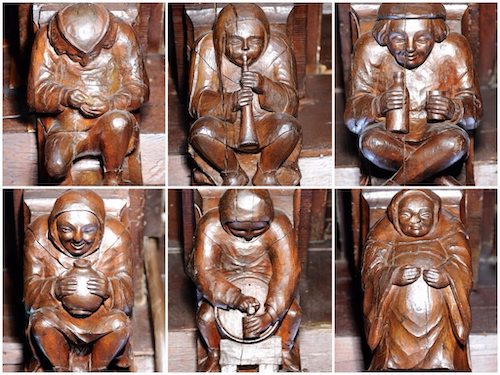
La Salamandre has some great gargoyles or wood carvings from Norman times. In days past Étretat was a simple fishing village that gained some small renown because its oysters were appreciated at the court of Versailles, it's said that Marie-Antoinette adored them. Then in the 19th century, when sea bathing became a craze, Etretat was suddenly on the social map, especially after 1847, when rail service began between Le Havre and Paris. Le tout Paris gathered here in their fancy clothes, joined by the literary and artistic crowd, including Corot, Courbet, Delacroix, Victor Hugo and Guy de Maupassant, who had spent his childhood here. Author Maurice Leblanc, creator of the gentleman burglar Arsène Lupin, had his summer home here, now a small museum honoring both the writer and his fictional anti-hero.
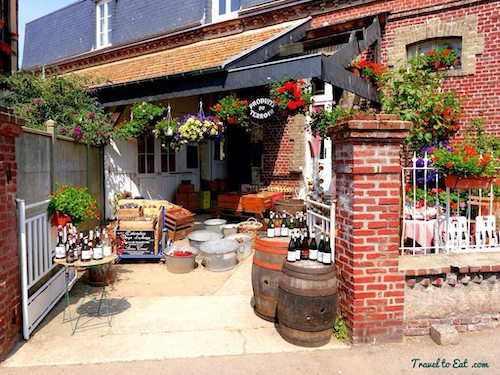
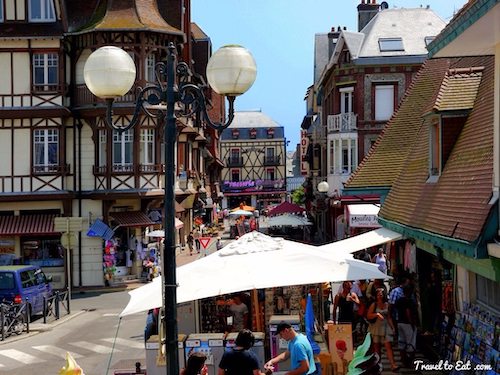

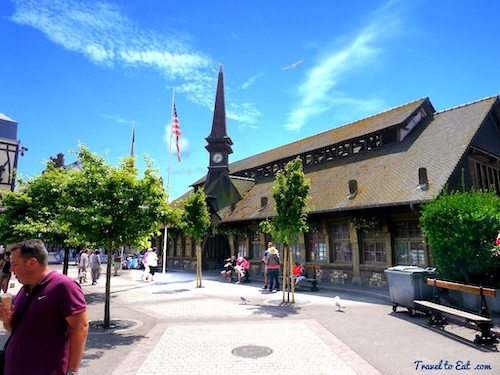
The old wooden covered market, now taken over by crafts and regional produce lies in the center of town. I am going to close this post with a painting by Gustave Courbet from 1870 “La falaise d'Étretat après l'orage”.
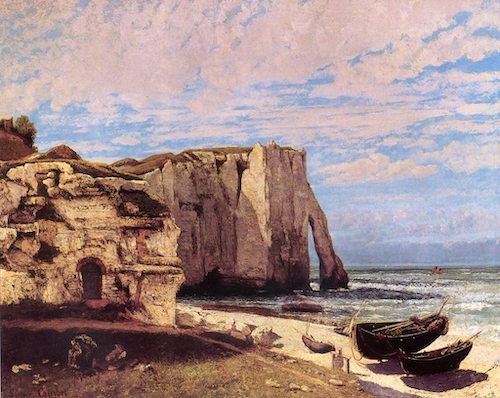
References:
Flint: http://www.ancientcraft.co.uk/Flintknapping/flint.html
Restaurant la Salamandre: http://www.restaurantlasalamandre.com/GB_restaurant_etretat_historique.htm

